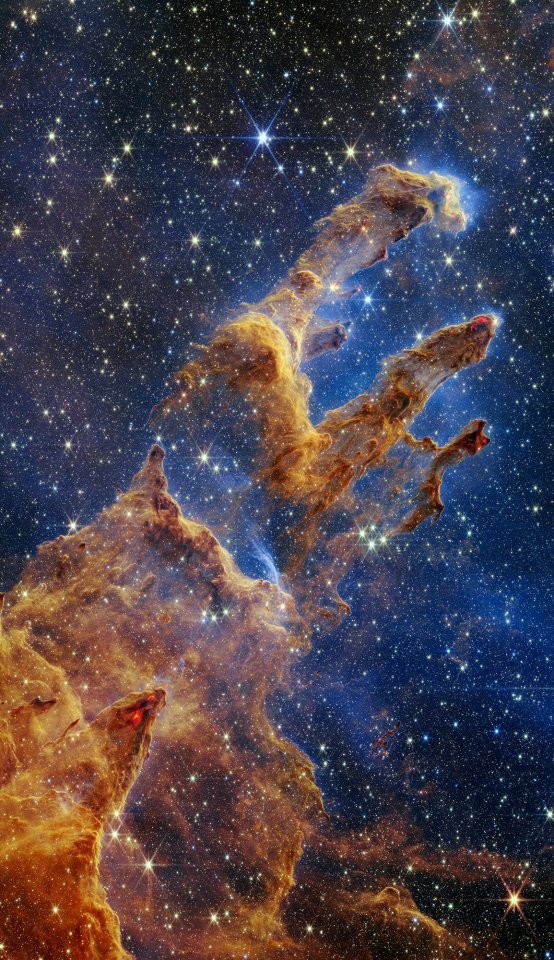The California Nebula, NGC 1499 // Alex Weinstein

The California Nebula, NGC 1499 // Alex Weinstein
The bright star to the right is Menkib (ξ Persei), whose name comes from the Arabic phrase mankib al Thurayya meaning "shoulder of the Pleiades".
More Posts from Ad-astra-affecte-spe and Others

The four giant planets of our Solar System, as seen by NASA's James Webb Telescope.


Whirlpool Galaxy M51a was the very first galaxy classified as a spiral galaxy.

NGC 5189
NGC 5189 is a planetary nebula in the constellation Musca. It was discovered by James Dunlop on 1 July 1826, who catalogued it as Δ252. For many years, well into the 1960s, it was thought to be a bright emission nebula. It was Karl Gordon Henize in 1967 who first described NGC 5189 as quasi-planetary based on its spectral emissions


Saturn has a mysterious hexagon at its north pole that has refused to give up its secrets, probably because neither Voyager 1 nor Cassini was able to plunge that deep and survive. Harvard scientists Rakesh Yadav and Jeremy Bloxham might have finally started to figure out what causes this peculiar feature. They believe that vortexes occur at the planet’s north pole because of atmospheric flows deep within the gas giant, and that these vortexes pinch an intense horizontal jet near the equator—which is what warps the storm into a hexagon. It still looks unnatural though.....!!!


The photos that NASAHubble & NASAWebb took of The Pillars of Creation inspired me deeply. I had to draw what I saw in the formation: A hand reaching into the universe. What an accomplishment for humankind and what a symbol for exploration and knowledge. Credit 2nd image: NASA

Eruption of Tvashtar volcano on Jupiter's moon Io (March 1, 2007)


“Drifting” by | André Brandt

Glorious Neptune, observed by Voyager 2 on August 24, 1989.
(NASA/Kevin Gill)
-
 aroace-omnist reblogged this · 8 months ago
aroace-omnist reblogged this · 8 months ago -
 arc-angel-o reblogged this · 8 months ago
arc-angel-o reblogged this · 8 months ago -
 arc-angel-o liked this · 8 months ago
arc-angel-o liked this · 8 months ago -
 doskx liked this · 8 months ago
doskx liked this · 8 months ago -
 mariasparrow liked this · 11 months ago
mariasparrow liked this · 11 months ago -
 l-green-team-l liked this · 1 year ago
l-green-team-l liked this · 1 year ago -
 spacersbest liked this · 1 year ago
spacersbest liked this · 1 year ago -
 frankietankbaker liked this · 1 year ago
frankietankbaker liked this · 1 year ago -
 servismeditation liked this · 1 year ago
servismeditation liked this · 1 year ago -
 brumbaughfett reblogged this · 1 year ago
brumbaughfett reblogged this · 1 year ago -
 brumbaughfett liked this · 1 year ago
brumbaughfett liked this · 1 year ago -
 pixieswithmagicbeans reblogged this · 1 year ago
pixieswithmagicbeans reblogged this · 1 year ago -
 married2themoon reblogged this · 1 year ago
married2themoon reblogged this · 1 year ago -
 unknown-cosmos-and-space reblogged this · 1 year ago
unknown-cosmos-and-space reblogged this · 1 year ago -
 fandomnerd369 liked this · 1 year ago
fandomnerd369 liked this · 1 year ago -
 i-j0s liked this · 1 year ago
i-j0s liked this · 1 year ago -
 happyrebeldeanknight liked this · 1 year ago
happyrebeldeanknight liked this · 1 year ago -
 xploseof reblogged this · 1 year ago
xploseof reblogged this · 1 year ago -
 asdetrebol015 liked this · 1 year ago
asdetrebol015 liked this · 1 year ago -
 cookingpancakes reblogged this · 1 year ago
cookingpancakes reblogged this · 1 year ago -
 alejosn89 reblogged this · 1 year ago
alejosn89 reblogged this · 1 year ago -
 frida--y reblogged this · 1 year ago
frida--y reblogged this · 1 year ago -
 opalescent-potato liked this · 1 year ago
opalescent-potato liked this · 1 year ago -
 qven-the-human liked this · 1 year ago
qven-the-human liked this · 1 year ago -
 the-yearning-astronaut reblogged this · 1 year ago
the-yearning-astronaut reblogged this · 1 year ago -
 pipuisci reblogged this · 1 year ago
pipuisci reblogged this · 1 year ago -
 shannybangbang liked this · 1 year ago
shannybangbang liked this · 1 year ago -
 oyasumiwa reblogged this · 1 year ago
oyasumiwa reblogged this · 1 year ago -
 kosyrev liked this · 1 year ago
kosyrev liked this · 1 year ago -
 zoechaz4 liked this · 1 year ago
zoechaz4 liked this · 1 year ago -
 the-username-you-wont-remember reblogged this · 1 year ago
the-username-you-wont-remember reblogged this · 1 year ago -
 the-username-you-wont-remember liked this · 1 year ago
the-username-you-wont-remember liked this · 1 year ago -
 scotts88 liked this · 1 year ago
scotts88 liked this · 1 year ago -
 iamthelowercase reblogged this · 1 year ago
iamthelowercase reblogged this · 1 year ago -
 thajazzyone2 reblogged this · 1 year ago
thajazzyone2 reblogged this · 1 year ago -
 artxmisery reblogged this · 1 year ago
artxmisery reblogged this · 1 year ago -
 artxmisery liked this · 1 year ago
artxmisery liked this · 1 year ago -
 mothboygoestocollege reblogged this · 1 year ago
mothboygoestocollege reblogged this · 1 year ago

★•Astronomy, Physics, and Aerospace•★ Original and Reblogged Content curated by a NASA Solar System Ambassador
204 posts
